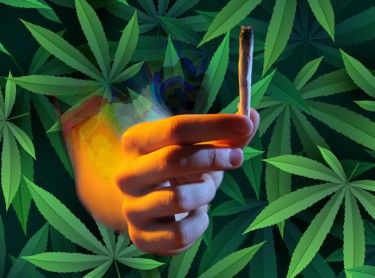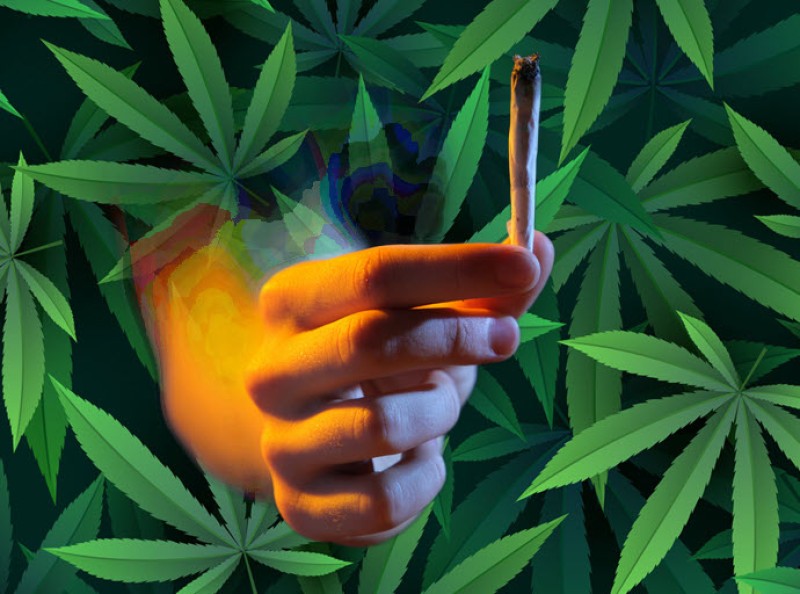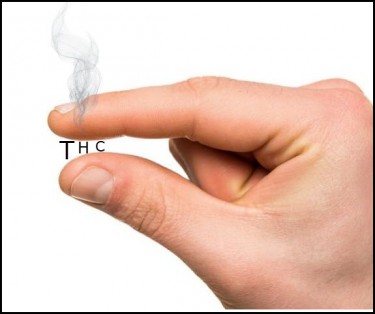
Each unique cannabis strain contains varying concentrations of cannabinoids, such as tetrahydrocannabinol (THC) and cannabidiol (CBD), alongside other compounds. Over time, cultivators and agricultural experts have dedicated themselves to cultivating distinct varieties with specific traits, often resulting in hybrids and specialized strains.
Historically, the primary goal of growers has revolved around developing cannabis strains with the utmost THC levels, a mindset that persists for many. Elevated THC levels lead to potent psychoactive effects, regardless of whether the strain is categorized as sativa, indica, or a blend of both. However, contemporary insights have enlightened us to CBD's remarkable therapeutic and healing potential within the plant. Consequently, cultivators are now directing their efforts towards crafting cannabis varieties rich in CBD, relegating THC to a secondary role.
Understanding the Difference: THC vs. CBD
Cannabidiol, commonly known as CBD, is a prominent cannabinoid—an exclusive class of chemical compounds inherent to cannabis sativa plants.
The categorization of a cannabis sativa plant hinges on its potential for producing CBD and THC:
-
Cannabis sativa Type I encompasses varieties with over 0.3% THC and under 0.5% CBD.
-
Cannabis sativa Type II comprises strains with around 0.3% THC and precisely 0.5% CBD.
-
Cannabis sativa Type III pertains to cultivars containing less than 0.3% THC and exceeding 0.5% CBD.
Among these classifications, Types I and II are deemed marijuana, while Type III is officially recognized as hemp.
The derivation of CBD can trace its roots to any variation of the cannabis sativa plant. However, within the United States, the legality of CBD is tied exclusively to hemp-derived sources—a pivotal differentiation elucidated more comprehensively in the subsequent elaboration.
Meanwhile, Delta-9-tetrahydrocannabinol, or THC, represents another primary cannabinoid in cannabis sativa plants. THC holds responsibility for generating the intoxicating, psychoactive sensation often associated with cannabis.
Although CBD and THC originate from the same botanical source, their distinct molecular compositions govern their interactions within the body. This inherent divergence also leads to divergent treatment within the legal framework of the United States.
THC is predominantly linked with the induction of psychoactive effects, a perception that Monique McHenry, Ph.D., the head of the Medical Cannabis Center for Research and Education at the University of Vermont Medical School, considers a "significant misconception." Lauren Rudick, a partner specializing in cannabis law at Hiller, PC—a New York-based law firm—aligns with McHenry's viewpoint, stressing the importance of this differentiation. While CBD certainly holds psychoactive properties, implying an influence on cognition, it doesn't induce intoxication or impair functionality.
The "high" associated with THC stems from its interaction with CB1 receptors. In contrast, CBD does not directly attach to CB1 or CB2 receptors, a distinction that prevents it from eliciting the same intoxicating impact as THC. Interestingly, when CBD and THC are consumed concurrently, CBD's interaction with the receptors can obstruct THC from binding effectively, thus mitigating specific effects typically linked to THC consumption.
Low-THC, High-CBD Cannabis: What Is It?
Cultivators purposefully nurture low-THC, high-CBD cannabis strains to exhibit notably reduced levels of THC while boasting elevated CBD concentrations when contrasted with conventional cannabis variants. The appeal of these strains has surged due to their plausible therapeutic advantages, offering a solution for individuals in pursuit of alleviation from diverse health afflictions without encountering the potent euphoria linked to high-THC strains.
Smoking Low-THC, High-CBD Cannabis
While CBD doesn't induce a high in individuals, it promotes well-being and tranquility. CBD sourced from hemp is legally accessible throughout the entire United States, but CBD derived from cannabis is only lawful in states permitting medical and recreational usage. How do these two forms of CBD differ in their effects?
First and foremost, there's a noticeable shift in mood, although it's not the dramatic alteration that either has you talking excessively or leaves you immobile on the couch. The sensation is more cerebral, fostering a feeling of overall comfort. Low-THC cannabis encourages a state of ease within one's own body and encompasses the therapeutic benefits of whole-plant medication.
It's often asserted that CBD can aid in smoking cessation and managing conditions like diabetes, acne, Crohn’s disease, fibromyalgia, multiple sclerosis, and insomnia, among many others.
Drawing a parallel, smoking low-THC, high-CBD buds resemble the tale of Goldilocks and the Three Bears. The high-THC strain takes you to significant levels of intoxication, while the hemp-derived CBD strain doesn't induce any psychoactive effects. However, the strain with a modest amount of THC and a substantial CBD content strikes the right balance, elevating your mood to euphoria without pushing you into a highly altered state.
Certain states, such as Florida, exclusively permit using low-THC, high-CBD cannabis. Beyond merely being a step above nothing, the gentle high and the alleviation it offers culminate in an experience that leaves a lasting impression and is likely to entice you back to the experience. While it's nearly improbable to become overly intoxicated on low-THC cannabis, you can certainly attain a state of blissful contentment.
Potential Drawbacks and Considerations
Exploring the potential of low-THC, high-CBD cannabis demands a measured and thoughtful approach, taking into account several important considerations:
The effects of cannabis can vary significantly from person to person. Factors such as an individual's tolerance, metabolism, and underlying health conditions are pivotal in shaping how they respond to low-THC and high-CBD strains. This variability underscores the need for personalized assessment and careful monitoring when considering their use.
While CBD has garnered significant attention in scientific research, there needs to be more comprehensive studies specifically focused on the effects of smoking distinct low-THC, high-CBD strains. Understanding how these strains interact with various health conditions requires a more robust body of evidence. Further research will be instrumental in determining their efficacy, safety, and potential limitations.
In essence, while low-THC, high-CBD cannabis holds promise for therapeutic applications, a cautious and well-informed approach is essential to navigate its use's intricacies. A balance between individual considerations, product quality, research-based insights, and health-conscious consumption methods will contribute to a more responsible and beneficial integration of these strains into one's wellness regimen.
Conclusion
As cultivators broaden their product offerings to encompass these novel variations of medical marijuana, they will inevitably persist in refining the genetics, skillfully extracting higher levels of CBD, and identifying the most advantageous cannabinoids, terpenes, and flavonoids.
This pursuit aims to craft the utmost quality of low-THC, high-CBD cannabis available. The era of craft cannabis undoubtedly takes the forefront in this evolving landscape, and this specific blend of cannabinoids aligns seamlessly with this innovative approach.






